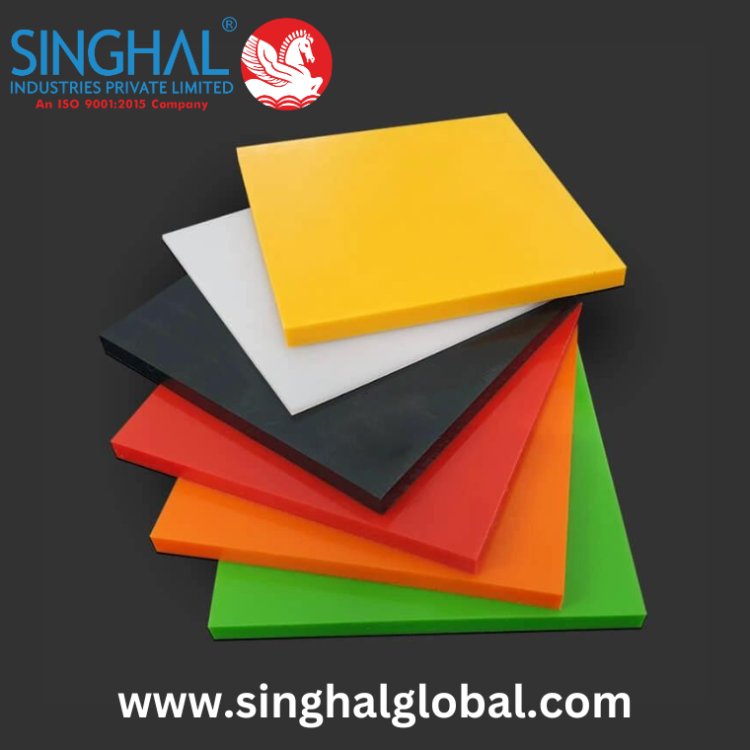Weather-Resistant HDPE Sheets for Outdoor Use: Long-Lasting Material for Various Environmental Conditions
Share this Post to earn Money ( Upto ₹100 per 1000 Views )

High-density polyethylene (HDPE) plastic sheets have gained significant popularity in recent years, particularly for outdoor applications. Known for their durability and versatility, these sheets are manufactured in various forms, including HDPE plastic sheet rolls and individual HDPE plastic sheets. This article explores the advantages of HDPE sheets products, their weather-resistant properties, and their suitability for diverse environmental conditions.
Durability and Strength
HDPE plastic sheets are renowned for their exceptional strength-to-density ratio. This characteristic makes them an ideal material for applications requiring robust performance and long-term durability. HDPE sheets can withstand heavy impacts and resist cracking, even under significant stress. This inherent strength is particularly beneficial for outdoor environments where materials are often exposed to harsh physical conditions.
Weather Resistance
One of the most notable features of HDPE sheets is their remarkable resistance to weather elements. Unlike other plastics that may degrade or become brittle when exposed to UV radiation, HDPE sheets are engineered to resist ultraviolet light, preventing sun damage and maintaining their structural integrity over time. This UV resistance is crucial for outdoor applications, as it ensures that HDPE sheets do not discolor or weaken due to prolonged sun exposure.
Moisture and Chemical Resistance
HDPE plastic sheets are inherently resistant to moisture, making them an excellent choice for applications involving water or high humidity. Unlike wood or metal, HDPE does not rot, warp, or corrode when exposed to moisture. This water resistance is complemented by the material's chemical resistance. HDPE plastic sheets can withstand a wide range of chemicals, including acids, bases, and solvents, without degrading. This makes them suitable for environments where exposure to corrosive substances is a concern.
Temperature Tolerance
The temperature tolerance of HDPE plastic sheets further enhances their suitability for outdoor use. These sheets can perform well in both high and low-temperature environments, maintaining their properties without becoming brittle in cold weather or softening in hot conditions. This broad temperature range makes HDPE sheets versatile for various climates and geographic locations.
Versatility in Applications
The versatility of HDPE sheets products is evident in their wide range of applications. They are commonly used in construction, agriculture, marine, and recreational areas. In construction, HDPE sheets serve as protective barriers, moisture barriers, and liners for landfills and containment ponds. In agriculture, they are used for water tanks, silo liners, and animal containment. Marine applications include dock fenders, boat parts, and anti-skid surfaces. Recreational uses range from playground equipment to outdoor furniture and sporting goods.
Ease of Fabrication
HDPE plastic sheets are easy to fabricate, cut, weld, and shape into various forms, providing designers and engineers with a high degree of flexibility. Whether used in sheet form or as HDPE plastic sheet rolls, the material can be manipulated to meet specific project requirements. This ease of fabrication reduces installation time and costs, making HDPE an attractive option for many outdoor applications.
Environmental Considerations
Sustainability is a growing concern in today's world, and HDPE sheets products contribute positively in this regard. HDPE is a recyclable material, meaning that products made from HDPE can be recycled at the end of their life cycle, reducing the environmental impact. Moreover, the long lifespan of HDPE sheet products reduces the need for frequent replacements, further minimizing waste and resource consumption.
Comparison with Other Materials
When compared to other materials commonly used for outdoor applications, HDPE plastic sheets offer several advantages. For instance, while wood can rot and metal can corrode, HDPE remains unaffected by moisture and chemicals. Furthermore, unlike PVC, which can become brittle with age and UV exposure, HDPE maintains its toughness and flexibility over time. This comparison highlights why HDPE is often the preferred choice for demanding outdoor environments.
Maintenance and Longevity
Maintenance is a critical factor in the overall cost-effectiveness of any material used in outdoor applications. HDPE plastic sheets require minimal maintenance due to their resistance to weathering, moisture, and chemicals. Regular cleaning with mild soap and water is typically sufficient to keep HDPE surfaces in good condition. This low maintenance requirement, coupled with the material's durability, ensures a long service life and reduces the total cost of ownership.
Conclusion
In conclusion, HDPE plastic sheets and HDPE plastic sheet rolls are exceptional materials for outdoor applications due to their durability, weather resistance, chemical and moisture resistance, and ease of fabrication. Their long-lasting nature and minimal maintenance requirements make them a cost-effective solution for various environmental conditions. As awareness of environmental sustainability grows, the recyclability and long lifespan of HDPE sheets further enhance their appeal, making them a preferred choice for many outdoor projects.
Frequently Asked Questions (FAQs)
1. What are HDPE plastic sheets commonly used for?
HDPE plastic sheets are used in a variety of applications including construction (protective barriers, liners), agriculture (water tanks, silo liners), marine (dock fenders, boat parts), and recreational areas (playground equipment, outdoor furniture).
2. How do HDPE sheets compare to other plastic materials?
HDPE sheets are more resistant to UV radiation, chemicals, and moisture compared to many other plastics. They also have a higher strength-to-density ratio, making them more durable and less prone to cracking or breaking.
3. Are HDPE sheets environmentally friendly?
Yes, HDPE sheets are environmentally friendly. They are recyclable and have a long lifespan, which reduces the need for frequent replacements and minimizes waste.
4. Can HDPE plastic sheets withstand extreme temperatures?
HDPE sheets can perform well in a wide range of temperatures, from very cold to very hot conditions, without losing their structural integrity or becoming brittle.
5. How do I maintain HDPE plastic sheets?
Maintaining HDPE plastic sheets is simple and requires minimal effort. Regular cleaning with mild soap and water is usually sufficient to keep them in good condition.
















